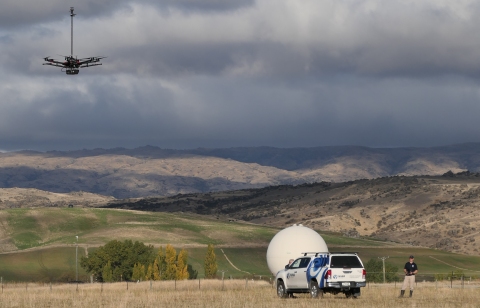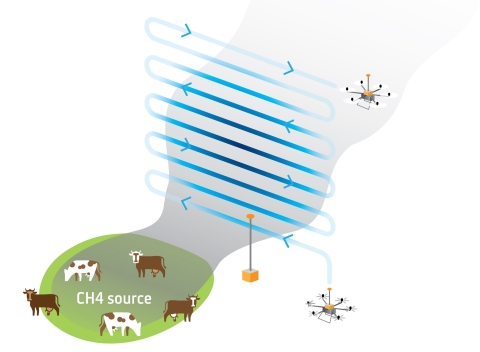Introduction
More than half of Aotearoa New Zealand’s greenhouse gas emissions come from agriculture, as reported annually by the Ministry for the Environment in its Greenhouse Gas Inventory. This is a much higher proportion than most other countries – globally, agricultural emissions average around 7.5% of a country’s total emissions.
Methane (CH4) accounts for the majority of agricultural emissions in New Zealand and comes mostly from farmed livestock, such as sheep and cattle. These animals naturally produce methane as a by-product of their digestive processes. NIWA researchers will test new technologies and methods for quantifying methane emissions from agriculture and waste, including ground-based and airborne measurements.
The work will provide New Zealand with much-needed, standardised capability to quantify CH4 emission fluxes from a range of source and sectors under fully operational conditions. This will help improve inventory approaches.

Controlled release experiments to build paddock-scale measurement capabilities
Part of this project involves making controlled releases of known quantities of methane (CH4) and a non-methane tracer gas and to apply a range of modelling techniques to assess and demonstrate NIWA’s analytical capabilities to quantify CH4 emissions at paddock scale.
As well as assisting New Zealand to measure its agricultural CH4 emissions at paddock or farm-scale, the research will also be invaluable in assessing emission reduction efforts.
Improving techniques to measure emissions at wastewater and landfill sites
The researchers are working with a network of advisory groups to identify appropriate waste study sites with topographies of simple to moderate complexity. The experiments carried out at these sites will enable the development of accurate modelling and measurement tools to quantify CH4 emissions.
Methodology
The researchers will characterise and assess NIWA’s range of capabilities to measure CH4 and non-methane tracer gases from airborne, mobile and temporarily deployed platforms. Several different methodologies will be trialled, including:
- trialling a new technique combining high resolution atmospheric transport modelling and an inverse approach, to quantify paddock-scale and facility scale CH4 emissions using observations of CH4 mole fractions and meteorology
- testing a UAV instrument package (meteorological and CH4) to quantify CH4 emissions
- applying a tracer- tracer technique to scale ‘unknown’ CH4 emissions to ‘known’ emissions of a non-methane tracer gas
- developing a simple instrument to safely release large amounts of flammable gases (CH4) at known rates
- undertaking “controlled release experiment” for CH4 on farmland in Central Otago, with release rates for CH4 reflecting emissions from herds of dairy cows representative of NZ farming practices and structures.


